PUNCTUATION
comma | semicolon
| colon | apostrophe | parentheses | dash | italics | quotation marks
Use a
SEMICOLON
Use a
COLON
|
1. Before formally
introducing a list (*An independent clause must
precede the colon.)
|
|
|
|
Examples
|
|
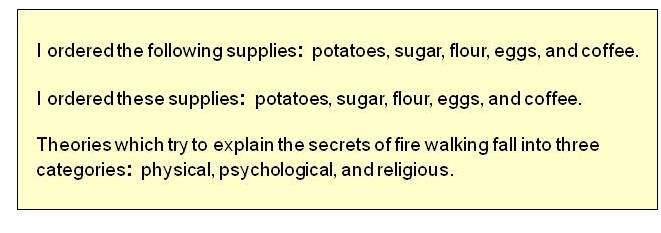
|
|
|
|
Incorrect
|
|

|
2. Between two independent
clauses when the second explains or expands the first
|
Examples
|
|
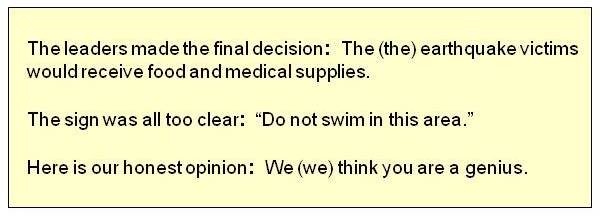
|
3. Before a formal appositive
(*An independent clause must precede the colon)
|
Example
|
|

|
|
|
|
|
|
Incorrect
|
|

|
|
|
4. Between hour and minute / chapter and verse
(Bible)
|
Examples
|
|

|
Use an
APOSTROPHE
|
1. To show ownership (to form the possessive case
of nouns)
|
|
|
|
Examples
|
|
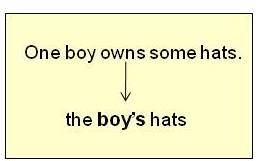
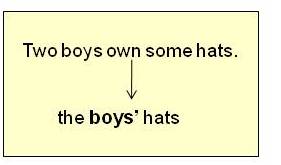
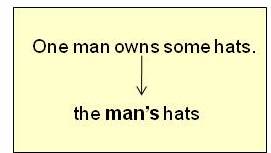
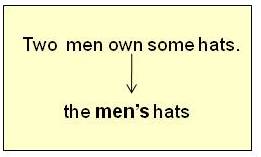
|
2. To show joint ownership with nouns
|
Example
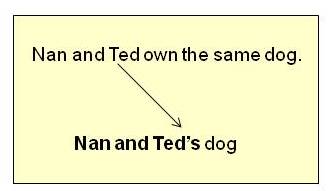
|
|
|
3. To show individual
ownership with nouns
Example
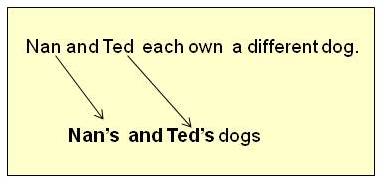
4. To show ownership with indefinite pronouns
|
Examples
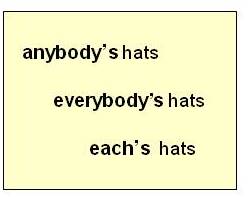
|
NOTE:Â
Do not use an apostrophe to form the
possessive case of the personal possessive pronoun
its.
Example
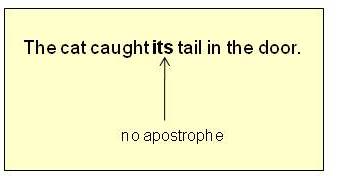
Do
use an apostrophe
with its
to mean it is
or it has.
Correct
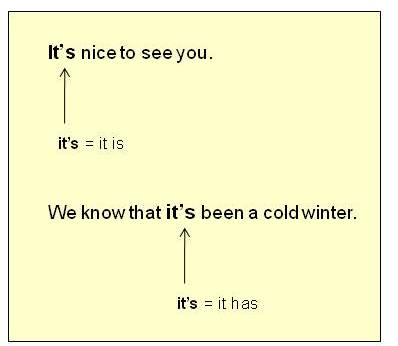
5. To form the plural of
letters, numbers, and signs, and of words referred to as words.
|
Examples
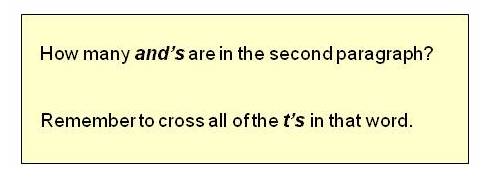 |
|
|
Use
PARENTHESES
1. To enclose interrupting
elements that add information or identification
|
Examples
|
|
|
 |
|
|
|
|
|
|
2. To enclose figures or
letters when used for enumeration within a sentence
|
Example
|
|

|
|
|
Use a
DASH
To set off parenthetical
matter
|
Example

|
|
NOTE:Â UNLIKE
PARENTHESES, WHICH MINIMIZE THE IMPORTANCE OF THE.
|
|
PARENTHETICAL
MATERIAL, DASHES EMPHASIZE PARENTHETICAL
|
|
MATERIAL.
|
Notice the different
emphasis in each sentence.
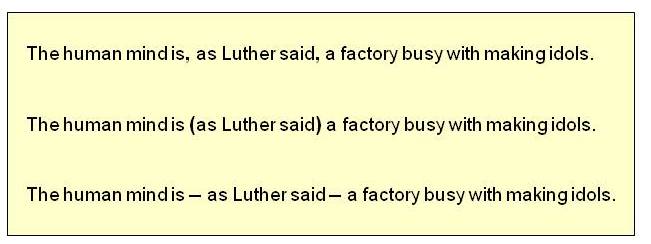
Use
ITALICS (underlining)
1. For words, letters, and
figures referred to as such
|
Examples
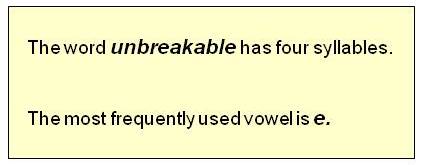 |
|
|
2. For foreign, technical (including
mathematical expressions), or unusual words and phrases.
Examples

|
3. For titles of books,
newspapers, magazines, journals, plays, movies, radio programs, TV
programs, long musical works, long poems, works of art, names of ships and
airplanes.
|
|
|
|
Examples
|
|

|
Use
QUOTATION
MARKS
|
2. To enclose
words used ironically or where the term so-called could be inserted.
|
|
|
|
Examples

|
|
|
3. To enclose a direct
quotation:Â a person's exact
words
Example
NOTE: Do
not use quotation marks to enclose indirect quotations.
Incorrect

Correct
NOTES FOR DIRECT
QUOTATIONS:
|
1. Start the quotation
with a capital letter.
|
|
2. Place commas and
periods INSIDE the quotation marks.
|
|
3. Place semicolons and
colons OUTSIDE the quotation marks.
|
|
4. Place question marks
and exclamation marks INSIDE the quotation marks if the quotation itself is a
question or an exclamation.
5. Place question marks and exclamation marks OUTSIDE the quotation
marks if the quotation itself is NOT a question or exclamation.
|
|
|
|
|
|
|
USE SINGLE
QUOTATION MARKS to enclose a quotation inside another quotation.
|
Examples
|
|
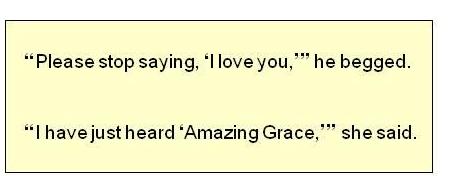
|
|
|
|
If the quotation within another quotation is a question or
an exclamation, place appropriate punctuation next to the item concerned.
Examples
|
|
Question quotation inside statement quotation 
Statement quotation inside question quotation

|
|
Question quotation inside question quotation

|
|
Exclamation quotation inside question quotation
or
Question quotation inside exclamation quotation

|